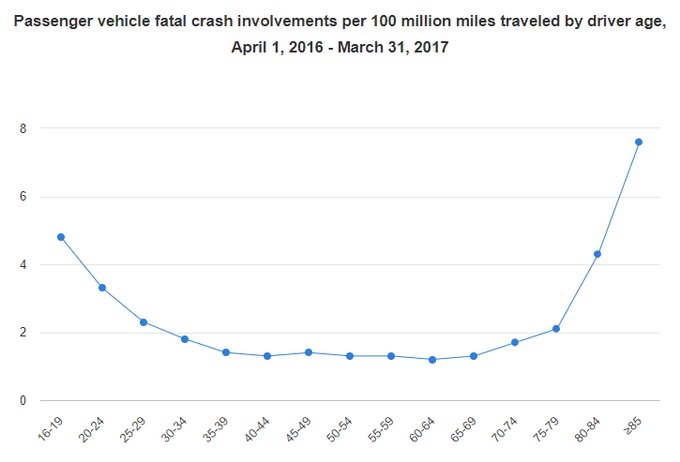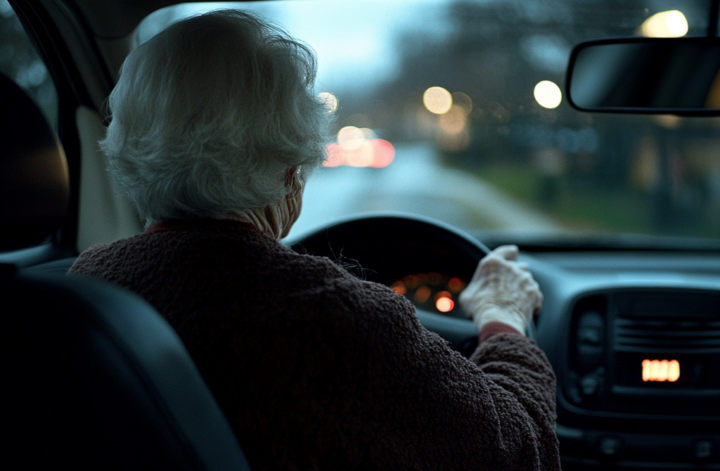A family member who is 84 years old lives in a retirement community in suburban NJ. She’s prided herself on being independent, and she’s always been extraordinarily healthy and active for her age. That is, up until recently. She fell while carrying groceries a few months ago, and while the fall wasn’t serious, she now has limited mobility in her shoulder and arm. She can no longer drive, and for someone as independent as her, this is a difficult shift to make.
The lifestyle change is even more dramatic because she lives in an auto-centric, mostly unwalkable neighborhood. It’s one of those neighborhoods that might be vaguely walkable for someone healthy, as there’s a grocery store and some other services about 3/4 of a mile away via hilly suburban streets and stroads. But for people who have limited mobility, it’s a challenge. The identity shift of having one’s car taken away, combined with living in a neighborhood that is essentially inaccessible without a car is a hard pill to swallow. The way we’ve built U.S. cities compounds the mobility challenges almost every aging person will face.

So now, there’s an ongoing battle between my elderly relative who wants to keep her freedom (her automobile), and other relatives who recognize her declining driving skills and want to keep her safe. This battle is replicated in homes throughout the country because of how we’ve designed our cities. Giving up a car in most of the U.S. means being completely dependent on other people for most of one’s daily needs. And if someone lives in a retirement community, it means being dependent on other elderly people whose driving abilities are also declining. It amazes me how we’ve built almost all of our neighborhoods in a way that traps people once they reach a certain age.
Many of these issues could be mitigated by building more affordable retirement communities in walkable, transit-friendly neighbourhoods. But whenever I visit downtowns or urban centers in the U.S., I hardly ever see people over 65 or 70, which is a growing demographic. So where are they? Mostly still driving while living in auto-dependent places. The decline after the age of 80 is real, however, and living in a car-dependent place quickly becomes a prison after a certain point. A simple drive to the supermarket becomes a logistical ordeal if driving becomes impossible. This is also true if one becomes disabled, which can happen to anyone. I was temporarily disabled last year, but since I was still able to walk and take transit for all of my needs, the impact on my lifestyle was far less than had I lived elsewhere.
While I was visiting Barcelona, I noticed something that I seldom see in U.S. neighborhoods: A broad mix of age groups. Everyone from babies to 80 year olds. The mix of housing types, the high transit usage, and the pleasant, walkable streets all play a role. There’s also a plethora of “3rd places” in the city where people can socialize. If you live in a place where you can walk a few blocks to access all of your daily needs while also mingling with your neighbors (which has its own health benefits), you can maintain your quality of life far longer than if you had to drive everywhere.
Integrating retirement communities into our cities instead of isolating them in the suburbs is a great way to create inter-generational places similar to Barcelona. Diversity cuts across all demographics, including age.
Mobility freedom isn’t discussed enough in the planning profession considering it impacts every single person if they live long enough. Walkable communities don’t just mean mobility freedom for the next generation. They mean freedom for previous generations, too. They mean one less source of stress for families. They mean allowing people to remain independent for possibly a decade longer than living in a car-dependent place. And they mean better quality of life for everyone.

